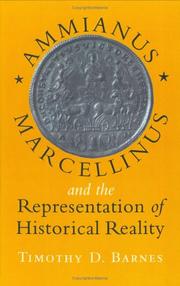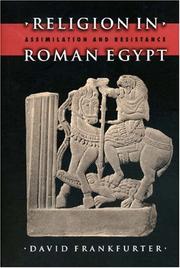| Listing 1 - 2 of 2 |
Sort by
|

ISBN: 0801435269 9780801435263 Year: 1998 Volume: 56 Publisher: Ithaca (N.Y.): Cornell university press,
Abstract | Keywords | Export | Availability | Bookmark
 Loading...
Loading...Choose an application
- Reference Manager
- EndNote
- RefWorks (Direct export to RefWorks)
Ammianus Marcellinus. --- Ammianus Marcellinus --- Criticism and interpretation --- Studies. --- Rome --- History --- Historiography --- -Historical criticism --- Authorship --- Criticism --- Ammien Marcellin --- Amiano Marcelino --- Ammiano Marcellino --- Marcellino, Ammiano --- Markelinus, Amyanus --- Amyanus Markelinus --- Marcellin, Ammien --- Marcellinus, Ammianus --- Marcelin, Amijan --- אמיאנוס מארקלינוס --- -Historiography. --- -Ammianus Marcellinus --- -Authorship --- Historical criticism --- Rim --- Roman Empire --- Roman Republic (510-30 B.C.) --- Romi (Empire) --- Historiography. --- Empire, 284-476 --- Ammianus Marcellinus. - Rerum gestarum libri. --- Criticism and interpretation. --- Historiography - Rome --- Ammianus Marcellinus - Rerum gestarum libri --- Rome - History - Empire, 284-476 - Historiography

ISBN: 0691026858 0691070547 9780691026855 9780691070544 0691214735 Year: 1998 Publisher: Princeton (N.J.): Princeton university press,
Abstract | Keywords | Export | Availability | Bookmark
 Loading...
Loading...Choose an application
- Reference Manager
- EndNote
- RefWorks (Direct export to RefWorks)
This exploration of cultural resilience examines the complex fate of classical Egyptian religion during the centuries from the period when Christianity first made its appearance in Egypt to when it became the region's dominant religion (roughly 100 to 600 C.E. Taking into account the full range of witnesses to continuing native piety--from papyri and saints' lives to archaeology and terracotta figurines--and drawing on anthropological studies of folk religion, David Frankfurter argues that the religion of Pharonic Egypt did not die out as early as has been supposed but was instead relegated from political centers to village and home, where it continued a vigorous existence for centuries. In analyzing the fate of the Egyptian oracle and of the priesthoods, the function of magical texts, and the dynamics of domestic cults, Frankfurter describes how an ancient culture maintained itself while also being transformed through influences such as Hellenism, Roman government, and Christian dominance. Recognizing the special characteristics of Egypt, which differentiated it from the other Mediterranean cultures that were undergoing simultaneous social and political changes, he departs from the traditional "decline of paganism/triumph of Christianity" model most often used to describe the Roman period. By revealing late Egyptian religion in its Egyptian historical context, he moves us away from scenarios of Christian triumph and shows us how long and how energetically pagan worship survived.
Egyptische godsdienst. --- Vroege christendom. --- Egypte. --- Egyptian --- Religion égyptienne --- -200.932 --- -Egyptian --- Religion History Egypt --- Religion égyptienne --- 299.31 --- Egypt --- -Christianity and other religions --- Christianity --- Christianity and other religions --- Syncretism (Christianity) --- 299.31 Godsdiensten van de Oude Egyptenaren --- Godsdiensten van de Oude Egyptenaren --- Religion --- Relations --- History --- 200.932 --- Christianisme --- Egypte --- 332 B.C.-638 A.D. --- Egypt - Religion - 332 B.C.-640 A.D. --- Christianity and other religions - Egyptian. --- RELIGION / History. --- Abydos. --- Ammianus Marcellinus. --- Apis bull. --- Atripe. --- Bes. --- Blemmyes. --- Canopus (Delta). --- Edfu. --- Eunapius. --- Gesios. --- Harpocrates. --- Hermetica. --- Herodotus. --- Horus. --- Jews and Judaism. --- John of Lycopolis. --- Libanius of Antioch. --- Lucian. --- Mandulis. --- Manichaeism. --- Min (Pan). --- Osiris. --- Paphnuti. --- Petbe. --- Plutarch. --- Re-Harmachis. --- Rufinus. --- Seth (Typhon). --- Syria. --- amulets. --- demons and demonology. --- domestic religion. --- exorcism. --- festivals. --- hagiography. --- healing and healers. --- naoi. --- oracles. --- terracotta figurines.
| Listing 1 - 2 of 2 |
Sort by
|

 Search
Search Feedback
Feedback About UniCat
About UniCat  Help
Help News
News